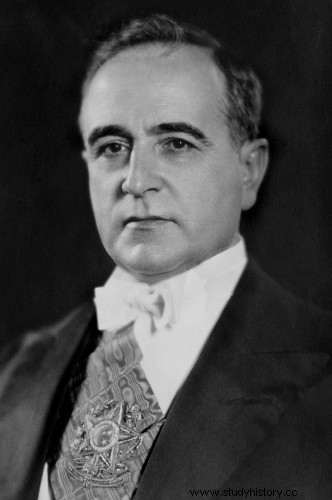
Throughout history, in different political conjunctures of periods and very diverse regions of the world, many events remained shrouded in obscurity. The obscure and “unresolved” character of certain events is the result of various circumstances:from the destruction or concealment of sources to the fabrication of hoaxes and false evidence. In the recent history of Brazil, specifically in the second phase of the political life of Getúlio Vargas, there was one of those events that, to this day, reverberates in police, political and histographical discussions, given its complex and mysterious character. This is the Attack on Tonelero Street .
The aforementioned attack took place on August 5, 1954 , on Tonelero Street, in the Copacabana neighborhood, Rio de Janeiro. The victim in question was the journalist, politician and, at the time, the biggest opponent of President Getúlio Vargas:Carlos Lacerda. Lacerda, who was one of the most important and influential Brazilian personalities of the 20th century, was returning home when, it is reported, he was surprised, at 180 Rua Tonelero, by several bullets coming towards his car. Two aeronautical officers provided security for him. One of them, Rubens Vaz, was mortally wounded. Lacerda was hit in the foot.
This attack became emblematic because Lacerda went public accusing President Vargas of having ordered his plot. Lacerda's accusation became credible when police investigations pointed to the figure of Gregório Fortunato , head of Getúlio Vargas' personal guard. Fortunato had already participated in a suspicious transaction with one of Vargas' sons, Maneco, having bought a farm from him, at the time, being endorsed by one of the former ministers, the future president João Goulart.
President Vargas himself, at the time, was surprised, both with Fortunato's involvement in the attack and his son's involvement in the purchase of the farm. Lacerda continued his attack on Vargas, working towards his ouster, inciting public opinion against the president. However, there were “loose ends” in the case. The medical records that proved the gunshot wound to Lacerda's foot disappeared from the hospital where the journalist was treated. At the same time, two men linked to Vargas' personal guard, Gregório and Alcino (both subordinate to Fortunato), were identified by the police as participants in the attack.
The fact is that these developments were followed by enormous pressure from Vargas' civilian opponents, especially members of the UDN , to which Lacerda was affiliated, and the Armed Forces, especially the brigadiers, led by Eduardo Gomes , so that Vargas resigned as president. As is well known, Vargas did not leave the Catete Palace alive. On August 24, 1954, at 8:35 am, Getúlio shot himself in the chest after leaving his famous letter to the Brazilian people.
_____________
*Image credits:Commons
By me. Claudio Fernandes
